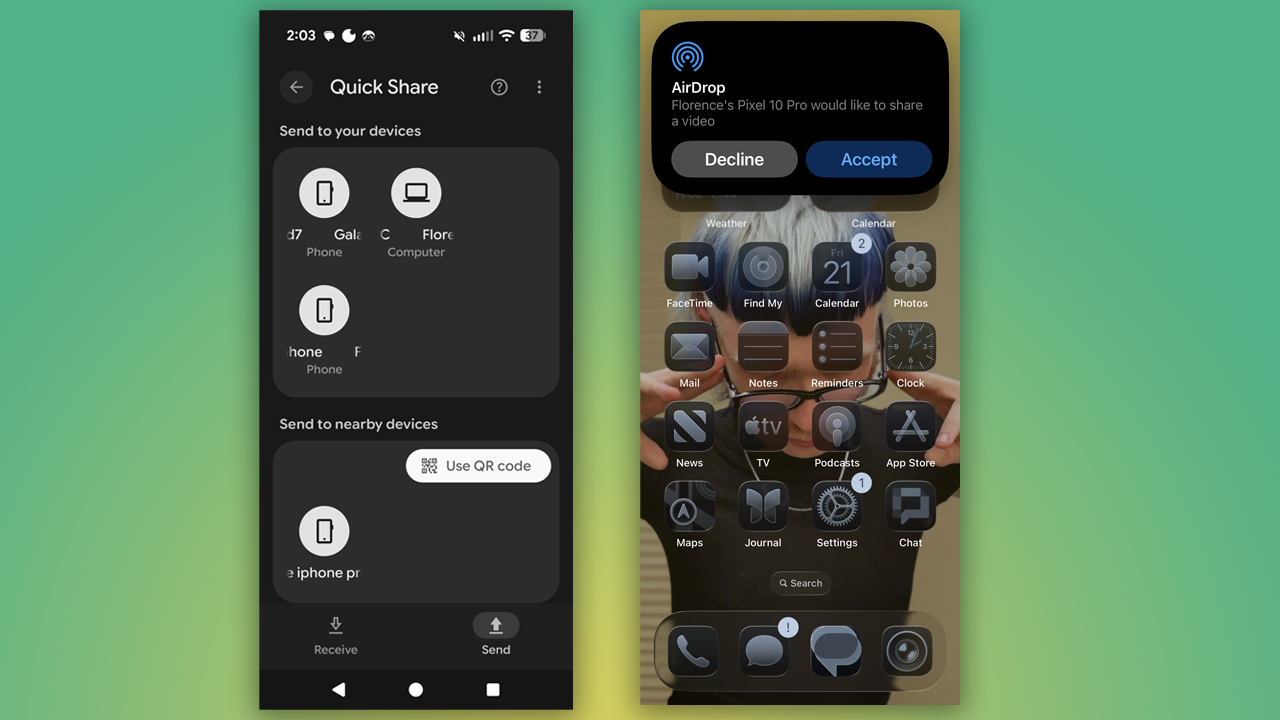The new cross-platform file-sharing ability is enabled by antitrust pressure, not magic.


If you're a faithful Android user, you're likely familiar with the AirDrop divide, especially if you've ever tried to share a photo or contact card with an iPhone. Like the Green Bubble Saga, AirDrop is another one of Apple's gated protocols. Those not in the walled garden were frozen out of spammy AirDrop memes and quick photo and file sharing between devices in the middle of nowhere.
As of yesterday, Google Pixel 10 smartphones can AirDrop media to iPhones, iPads, and Macs. Naturally, those straddling the line between the two ecosystems are relieved about this, as it makes sharing files between devices super convenient. You'll have to pardon my side-eye, I've been wirelessly sharing files between my Android devices and my Windows PC for years now. But I digress.
The ability to share files with the iPhone is limited to the Pixel 10, but it foreshadows an imminent rollout to Android, which would further increase connectivity between the dueling platforms. Google let us know it achieved this feat unilaterally, without Apple's cooperation. The official statement to outlets is that the company "accomplished this" all on its own. "[Google's] goal is to provide an easy and secure file-sharing experience for our users, regardless of who they are communicating with."
Google detailed the technicalities in a security blog post about how it leveraged the memory-safe Rust language to bridge Android's built-in Quick Share and Apple's AirDrop. The company even had a third-party security firm test the connection to audit its security, and, supposedly, it's stronger than connections between other devices. Ultimately, this feels like nothing more than a massive public relations coup for Google as it seeks to bring in more users to its platform, specifically through its Pixel hardware.
It's also crucial to note that the whole reason this interoperability exists in the first place is due to escalating antitrust pressure from the European Union. The EU's landmark Digital Markets Act designated Apple as a gatekeeper that needed to open up. It mandated that Apple phase out its proprietary protocol, Apple Wireless Direct Link (AWDL), and enable support for Wi-Fi Aware instead. Wi-Fi Aware is included in iOS 26 and iPadOS 26, and it's been a part of Android since version 8.0, which is how Google found a way in.
I successfully AirDropped a few files between the iPhone 16 Pro and my Pixel 10 Pro. I had to set the iPhone's AirDrop mode to "Everyone for 10 minutes only" and the same on Quick Share on the Pixel device. The iPhone showed up under "other devices," and when the connection was established, iOS popped up a little notification window with the file transfer process. The images I transferred over were immediately added to the iPhone's camera roll.
I'm into it. It's not available on all Android devices and the iPhone quite yet. And maybe Apple will cut it off by next week. But I'm into the change that's coming as a result of the EU's DMA. Granted, both Apple and Google are fighting the EU in whatever way is necessary to keep business going as usual. But at the end of the day, it's a hearty reminder that the core obstacles separating us are political, not technical.
I'm so sorry I couldn't be on the show this week to discuss how I dropped the OnePlus 15 off my second-story balcony. I keep getting sick with every little thing since I had COVID in September, and you can imagine how frustrating it is for me to have to cancel plans due to illness. On the plus side, we had Jason, Ron, and Mishaal holding down the fort. Mishaal walked us through what's new from Gemini 3.